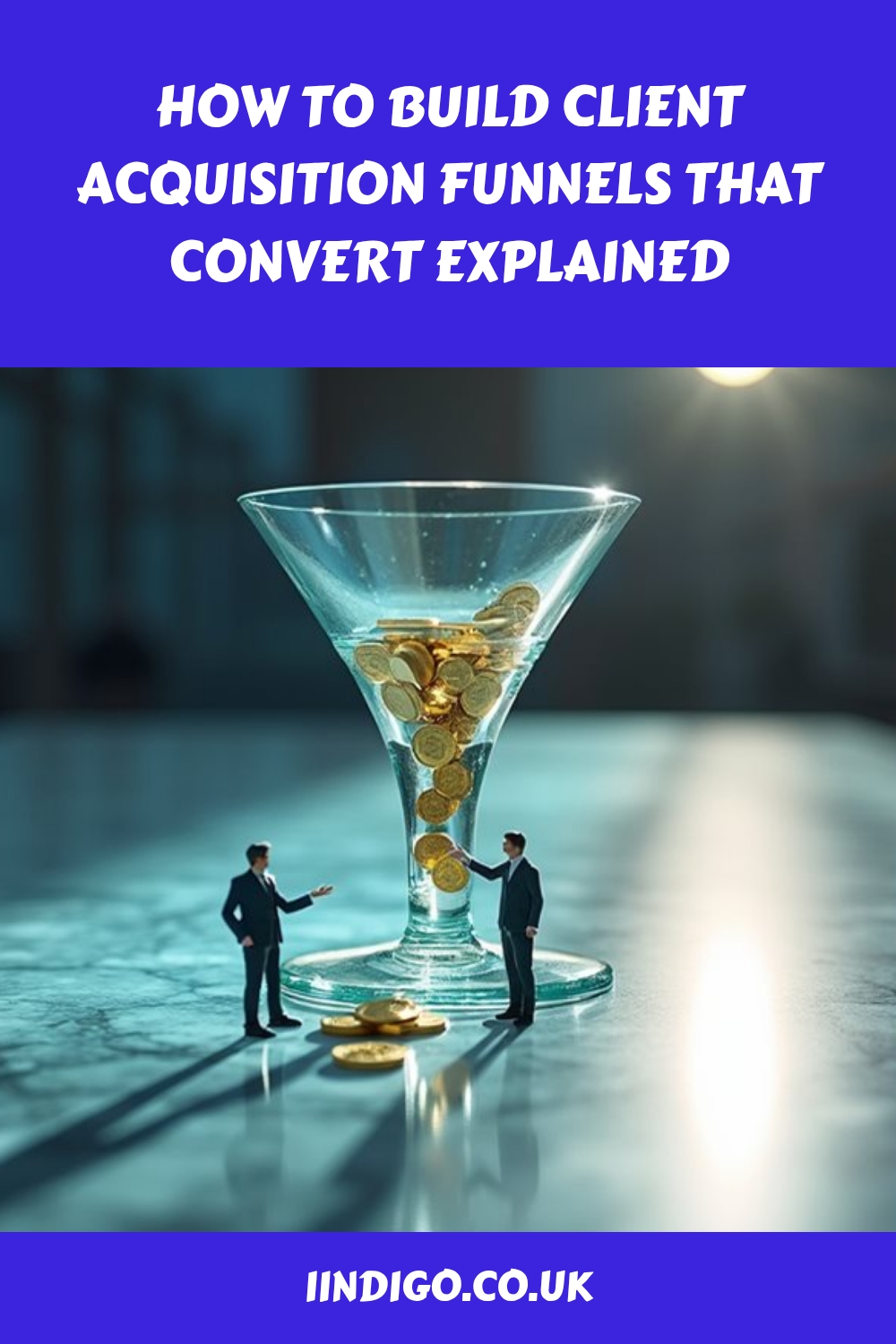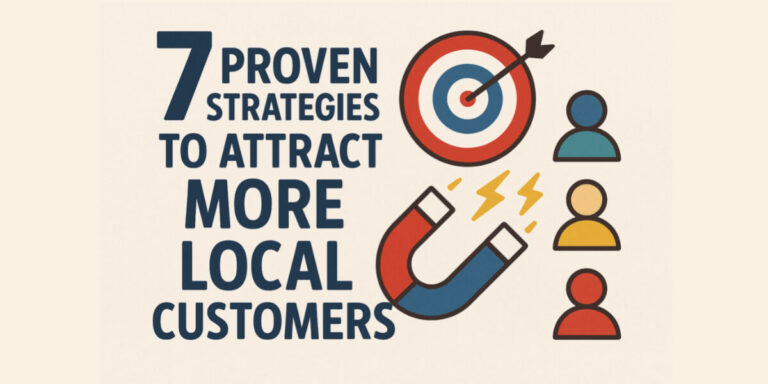
Building high-converting client acquisition funnels requires three crucial components: awareness generators that capture attention through valuable content, trust builders like testimonials and case studies, and decision accelerators that create urgency. You’ll need to identify your ideal client avatar’s demographics and pain points, create compelling lead magnets solving specific problems, optimize landing pages with clear headlines, and nurture prospects through strategic email sequences. The following insights will transform your approach to systematic client acquisition.
Understanding the Anatomy of High-Converting Client Acquisition Funnels

When you’re building a client acquisition funnel that actually converts, you need to understand that it’s more than a linear path from stranger to customer—it’s a carefully orchestrated system of interconnected touchpoints that guide prospects through specific psychological stages.
Each high-converting funnel contains three crucial components: awareness generators, trust builders, and decision accelerators. Your awareness stage captures attention through valuable content that addresses specific pain points.
Trust builders include testimonials, case studies, and social proof that validate your expertise, such as client testimonials that showcase successful project outcomes. Decision accelerators create urgency and remove friction from the purchasing process.
Understanding funnel psychology means recognizing that prospects need different types of information at each stage. Effective conversion optimization requires testing each element systematically, measuring drop-off points, and refining your messaging to match your audience’s emotional experience from skepticism to confidence.
Identifying Your Ideal Client Avatar and Target Audience
You can’t build an effective acquisition funnel without knowing exactly who you’re targeting, which means creating a detailed client avatar that goes beyond surface-level characteristics.
Start by defining precise demographics like age, income, location, and professional background, then analyze the specific pain points that keep your ideal clients awake at night.
Once you understand their struggles, you’ll need to map their buying behavior patterns to discover how they research solutions, make decisions, and ultimately purchase services like yours. Additionally, a quality website design can significantly enhance your credibility and appeal to your target audience.
Define Client Demographics Precisely
Marketing success hinges on understanding exactly who you’re trying to reach, yet most businesses cast their nets too wide and wonder why they’re not catching the right fish.
Effective demographic segmentation requires precision that goes beyond basic age and income brackets. You’ll need to dig deeper into specific characteristics that actually influence purchasing decisions.
Comprehensive audience profiling involves three critical elements:
- Geographic specifics – Location, climate preferences, urban versus rural lifestyle choices
- Psychographic details – Values, interests, lifestyle habits, and personal motivations
- Behavioral patterns – Shopping frequency, brand loyalty, decision-making triggers
Don’t settle for vague descriptions like “working professionals aged 25-45.”
Instead, define your ideal client as “tech-savvy marketing managers in mid-sized companies who value efficiency tools and make software purchasing decisions quarterly.”
Analyze Pain Points Deeply
Understanding your ideal client’s specific characteristics provides the foundation, but knowing their struggles and frustrations drives real connection and conversions.
You’ll need to dig deeper than surface-level problems to uncover the emotional triggers that motivate purchasing decisions.
Start your pain point analysis by conducting thorough market research and competitor analysis.
Examine what solutions your competitors offer and identify gaps in their approach.
Collect user feedback through surveys, interviews, and social media monitoring to understand genuine client frustrations.
Map out the complete customer experience, noting friction points where prospects typically abandon their search for solutions.
Focus on solution identification that addresses both practical needs and emotional pain points.
This deep understanding transforms your messaging from generic marketing speak into compelling, targeted communication that resonates with your audience’s real experiences.
Map Buying Behavior Patterns
When do your ideal clients actually make purchasing decisions, and what triggers them to act? Understanding buyer psychology requires mapping specific moments when prospects shift from browsing to buying.
You’ll discover patterns by tracking customer experiences and identifying consistent purchase triggers across your audience.
Three critical behavior patterns to monitor:
- Seasonal buying cycles – When clients typically allocate budgets or prioritize solutions
- Event-driven purchases – Specific circumstances that create immediate need for your services
- Decision-making timelines – How long prospects research before committing to purchase
Document these patterns by analyzing past client interactions, surveying current customers, and tracking website behavior.
Look for emotional triggers like urgency, fear of missing out, or desire for status. This mapping reveals ideal timing for outreach and helps you position offers when prospects are most receptive to your solutions.
Creating Compelling Lead Magnets That Attract Quality Prospects
As your potential clients scroll through endless content online, they’re constantly deciding what deserves their attention and what gets ignored. Your lead magnet must cut through this digital noise by solving a specific, urgent problem your prospects face daily.
Effective lead magnet strategies focus on delivering immediate value rather than promotional content.
Consider creating actionable resources like step-by-step guides, templates, or exclusive industry insights that your ideal clients can’t find elsewhere. Your content marketing approach should position these magnets as previews of your expertise, not complete solutions.
Quality prospects respond to specificity—address their exact pain points with laser precision.
Designing Landing Pages That Maximize Conversion Rates

Why do most lead magnets fail to convert visitors into qualified prospects? Often, it’s because their landing pages aren’t optimized for conversion.
You’ve created an amazing lead magnet, but without strategic landing page elements, you’ll watch potential clients slip away.
Your landing page acts as the bridge between interest and action. Here’s what you need to focus on:
Your landing page is the critical bridge that transforms visitor curiosity into committed action and real business results.
- Clear, benefit-driven headlines that immediately communicate value
- Minimal form fields that reduce friction and increase completion rates
- Social proof elements like testimonials or client logos that build trust
Conversion rate optimization isn’t just about aesthetics—it’s about psychology.
You’re guiding visitors through a decision-making process. Remove distractions, maintain consistent messaging from your traffic source, and guarantee your call-to-action stands out.
Test different variations to discover what resonates with your specific audience.
Nurturing Leads Through Strategic Email Sequences
Once you’ve captured a lead’s contact information, the real work begins—transforming that initial interest into genuine trust and eventually a paying client. Your email sequence becomes the bridge between curiosity and conversion, requiring careful orchestration to maintain momentum.
Effective email personalization strategies go beyond inserting names into subject lines. You’ll want to segment leads based on their specific interests, pain points, and behavioral triggers. Tailor content that speaks directly to their challenges while positioning your expertise as the solution.
Strategic lead engagement techniques include varying email formats—educational content, case studies, testimonials, and soft offers.
Space your messages thoughtfully, typically every 2-3 days initially, then weekly. Each email should provide value while gently guiding prospects toward your services, building anticipation for deeper engagement.
Leveraging Social Proof and Testimonials to Build Trust

When potential clients evaluate your services, they’re not just weighing your credentials—they’re seeking reassurance that others have walked this road successfully before them.
Social proof transforms skeptical prospects into confident buyers by showcasing real experiences from satisfied clients.
Your testimonial strategies should focus on authenticity and specificity. Generic praise won’t move the needle, but detailed success stories will.
Here’s how to maximize social proof impact:
- Video testimonials – Capture clients sharing specific results and transformation details
- Case study breakdowns – Document the passage from problem to solution with measurable outcomes
- Social media mentions – Screenshot and display organic client praise from various platforms
Position testimonials strategically throughout your funnel, especially at decision points where prospects need final reassurance.
Fresh, relevant social proof consistently outperforms outdated endorsements.
Implementing Effective Call-to-Action Strategies Throughout Your Funnel
Social proof builds trust, but it’s your call-to-action strategies that convert that trust into tangible business results.
Strategic call to action placement determines whether prospects take the next step or abandon your funnel entirely. You’ll want to position CTAs at natural decision points, immediately after delivering value or addressing pain points.
Your persuasive language should create urgency without appearing pushy. Use action-oriented verbs like “discover,” “unlock,” or “secure” rather than passive phrases. Test different variations to see what resonates with your audience.
Consider your funnel’s flow when crafting CTAs. Early-stage visitors need low-commitment options like “Download Free Guide,” while warmed prospects respond better to “Schedule Your Strategy Call.”
Match your CTA intensity to where prospects are in their buyer’s progression for maximum conversion rates.
Optimizing Your Sales Process for Maximum Client Conversion

You’ve built an impressive funnel that attracts prospects, but conversion happens in your sales process where every friction point costs you clients.
The key to maximizing conversions lies in simplifying your decision-making steps, so prospects can move effortlessly from interest to commitment without unnecessary obstacles.
Additionally, you’ll want to automate your follow-up sequences to maintain consistent contact and nurture relationships, guaranteeing no potential client slips through the cracks due to timing or oversight.
Streamline Decision-Making Steps
Although prospects might express initial interest in your services, they’ll often abandon the process if your sales funnel creates unnecessary friction or confusion along their path to becoming clients.
Decision fatigue occurs when potential clients face too many choices or complex processes, causing them to delay or abandon their purchase entirely. Cognitive biases also influence how prospects evaluate your offerings, making streamlined pathways crucial.
Reduce decision-making complexity with these strategies:
- Limit service packages to three clear options that address different client needs and budgets.
- Create single-page proposal formats that highlight key benefits without overwhelming technical details.
- Implement one-click scheduling systems for consultations, removing barriers between interest and engagement.
You’ll convert more prospects by eliminating unnecessary steps and presenting clear, actionable choices that guide them naturally toward becoming clients.
Automate Follow-Up Sequences
When potential clients don’t respond immediately to your initial outreach, consistent follow-up becomes the difference between lost opportunities and closed deals.
You can’t rely on manual tracking to maintain momentum with every prospect in your pipeline. Set up automated reminders that trigger at strategic intervals after your initial contact.
Your follow-up timing should space messages across days, not hours, giving prospects time to reflect on your offer without feeling pressured. Create a sequence that adds value with each touchpoint—share relevant case studies, industry insights, or helpful resources rather than simply asking “Did you see my last message?”
Configure your system to pause automation when prospects respond, guaranteeing human conversations aren’t interrupted by robotic messages.
This approach maintains consistent contact while preserving authentic relationship-building opportunities.
Tracking Key Metrics and Analytics to Measure Funnel Performance
Measuring your client acquisition funnel’s performance isn’t just about collecting data—it’s about transforming raw numbers into actionable insights that drive real business growth.
You’ll need to track specific performance metrics that reveal where prospects drop off and which stages convert best.
Focus on these crucial metrics for effective funnel optimization:
- Conversion rates at each stage – Track how many prospects move from awareness to contemplation to decision.
- Cost per acquisition (CPA) – Calculate total marketing spend divided by new clients acquired.
- Customer lifetime value (CLV) – Measure long-term revenue potential from each converted client.
Don’t get overwhelmed by vanity metrics like social media likes. Instead, concentrate on data that directly impacts your bottom line.
Set up automated tracking through tools like Google Analytics or HubSpot to monitor these performance metrics consistently.
Scaling and Automating Your Client Acquisition System for Growth

Once you’ve mastered tracking your funnel metrics, it’s time to transform your client acquisition process from a manual operation into an automated growth machine.
You’ll need to implement lead nurturing sequences that work around the clock, guiding prospects through your funnel without constant hands-on attention.
The key lies in integrating your systems seamlessly, creating a unified workflow that scales your efforts while maintaining the personal touch your clients expect.
Automate Lead Nurturing Sequences
While manual lead nurturing might work when you’re starting out, successful client acquisition systems demand automated sequences that consistently engage prospects without consuming your valuable time.
Implementing lead scoring creates a powerful foundation for your automated nurturing system. You’ll track prospect behavior, assign point values to specific actions, and trigger appropriate follow-up sequences based on engagement levels.
Here’s your automation framework:
- Segmentation triggers – Automatically sort leads based on demographics, behavior, and interests
- Dynamic content delivery – Send targeted messages that align with each prospect’s pathway stage
- Response-based branching – Create different pathways depending on prospect interactions
Content personalization becomes effortless when you integrate these elements. Your system delivers relevant information precisely when prospects need it, building trust and moving them closer to conversion without requiring constant manual intervention.
Scale Through System Integration
As your automated lead nurturing sequences gain momentum, the real power emerges when you connect multiple systems to create a flawless client acquisition ecosystem.
System integration benefits multiply when your CRM automatically triggers email sequences, updates customer data, and syncs with your scheduling tools. You’ll eliminate manual data entry while guaranteeing leads never fall through cracks.
Start with your core platforms: connect your lead capture forms to your email marketing tool, then link that to your CRM.
Add scheduling software that automatically books qualified prospects. The flawless technology implementation creates a unified workflow where each system feeds the next.
Your prospects experience effortless transitions from initial contact to final conversion, while you gain complete visibility into every touchpoint and conversion metric.
Frequently Asked Questions
How Much Budget Should I Allocate for My Client Acquisition Funnel?
You should allocate 10-20% of your revenue for budget allocation in client acquisition. Start small, test cost effectiveness across channels, then scale what works. Don’t overspend initially—you’ll optimize and increase investment as you identify profitable conversion paths.
What’s the Typical Timeline to See Results From a New Funnel?
You’ll typically see initial funnel performance within 2-4 weeks, but meaningful results take 60-90 days. Start result tracking immediately to identify optimization opportunities. Give your funnel at least three months before making major strategic changes.
Can I Build Effective Funnels Without Technical Skills or Coding Knowledge?
Sarah built a six-figure coaching funnel using only Leadpages and zero coding. You can absolutely create effective funnels without technical skills—focus on funnel design principles and user experience rather than complex code.
How Do I Handle Funnel Management Across Multiple Service Offerings?
You’ll need funnel segmentation strategies to separate each service offering. Create dedicated landing pages and email sequences for service offering alignment. This guarantees you’re targeting the right audience with relevant messaging for each specific service.
What Legal Compliance Issues Should I Consider When Collecting Lead Data?
Better safe than sorry – you’ll need robust data protection protocols and clear consent management systems. Guarantee GDPR/CCPA compliance, implement transparent privacy policies, secure data storage, and obtain explicit opt-ins before collecting any lead information.
Final Thoughts
You’ve learned the building blocks of conversion-focused funnels, but knowledge without action remains powerless. While many businesses struggle with inconsistent lead generation, you now possess the framework to create predictable client acquisition. Your competitors will continue guessing at what works, yet you’ll be measuring, optimizing, and scaling systematically. The difference between hoping for clients and attracting them lies in implementing these proven strategies. Your funnel success starts with your next move.
- How to Plan a Content Calendar That Works - 29/10/2025
- SEO Content vs. Social Media Content: What’s the Difference? - 23/10/2025
- The Best Types of Content for Service Businesses - 16/10/2025




